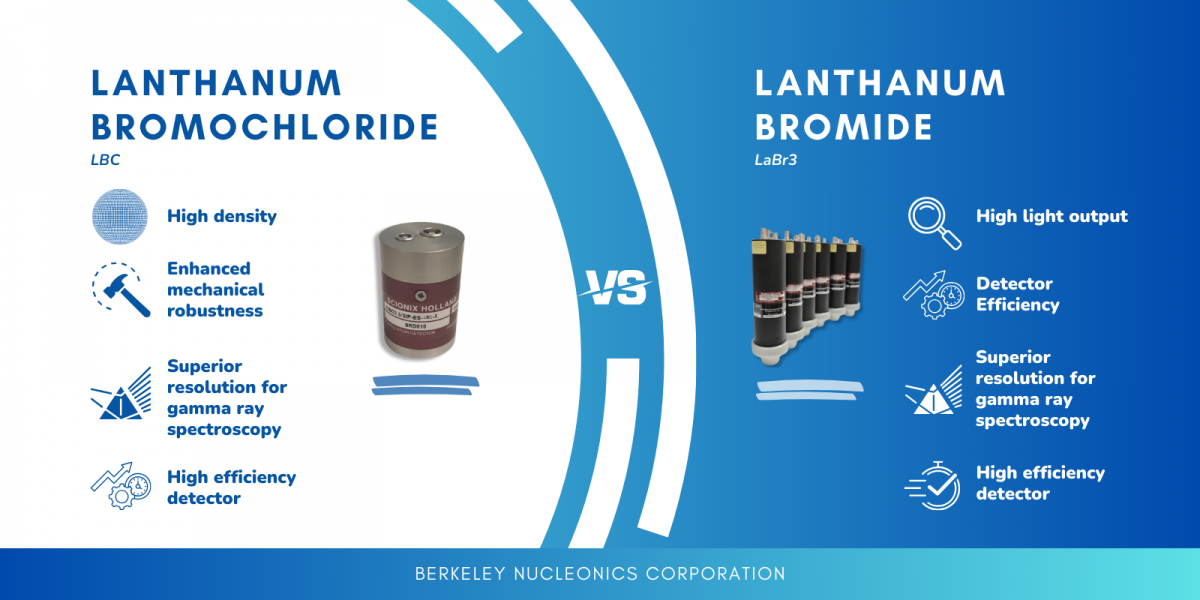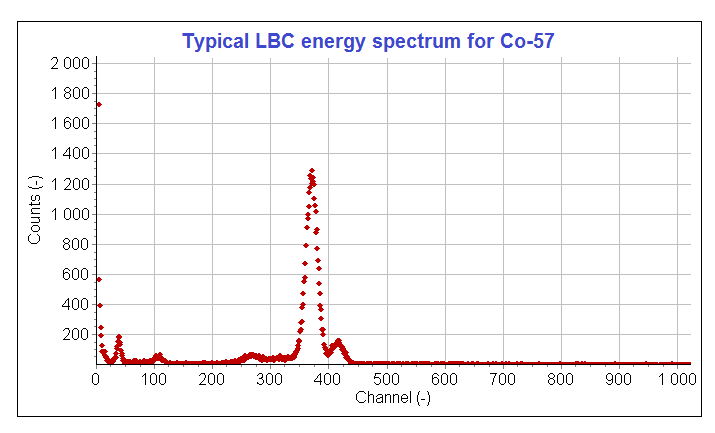April 22, 2024 - Comparing LBC and LaBr3:Ce Scintillators: A Detailed Overview
LBC and LaBr3:Ce Scintillators
Lanthanum BromoChloride (LBC) scintillators, represented by the chemical formula LaBr2.85Cl0.15:Ce, are gaining prominence in radiation detection due to their notable features which are closely aligned with those of the renowned LaBr3:Ce crystals. These scintillators are celebrated for their high-resolution capabilities and enhanced mechanical robustness, positioning them as an attractive alternative in various scientific and industrial applications.

Key Properties of Lanthanum BromoChloride
LBC scintillators deliver energy resolutions approximately at 3% Full Width at Half Maximum (FWHM) at 662 keV, similar to the performance of LaBr3:Ce crystals. This level of resolution is essential for precise gamma-ray spectrometry, critical in fields such as medical imaging and environmental monitoring.
Despite these similarities, LBC scintillators offer improved mechanical strength over LaBr3:Ce. This increased durability makes LBC more suitable for applications where physical robustness is as important as detection precision, such as portable radiation detectors used in harsh environments.
Drawbacks in Comparison to LaBr3:Ce
A notable disadvantage of both LBC and LaBr3:Ce scintillators is their susceptibility to background noise from La-138, which can interfere with the clarity of radiation detection. However, this is a shared limitation, and thus, it does not diminish the comparative advantage of LBC in other areas.
Applications Reflecting Their Comparative Strengths
The enhanced mechanical strength and high-resolution capabilities of LBC make it particularly useful not only in typical environments where LaBr3:Ce is used but also in more demanding settings. This makes LBC an ideal choice for use in field operations involving geological surveying and outdoor environmental monitoring, where equipment may be exposed to mechanical stress.
Berkeley Nucleonics Provides Comprehensive Scintillator Options
Berkeley Nucleonics stands out for offering both LBC and LaBr3:Ce scintillators, recognizing the distinct benefits and applications of each. LBC scintillators align closely with LaBr3:Ce in terms of radiation detection efficiency, but they surpass them in durability. This makes LBC particularly advantageous for applications where scintillators may be subjected to rough handling or harsh environmental conditions.
Both LBC and LaBr3:Ce scintillators are vital for the ongoing development of scintillation technology. Each material is optimized for specific scenarios—LBC for its robustness and LaBr3:Ce for its exceptional clarity in radiation detection, making them indispensable across various scientific, medical, and industrial fields.
For those in the industry looking to make informed decisions about which scintillation material to use, Berkeley Nucleonics not only provides these materials but also detailed comparative analyses. This helps users understand the trade-offs and benefits, ensuring they choose the right type of scintillator for their specific needs.
Further insights into the properties and applications of LBC scintillators, as well as how they stack up against other materials like LaBr3:Ce, can be accessed on Berkeley Nucleonics' website. Here, interested parties will find a wealth of information tailored to guide in the selection and application of scintillation detectors. For more detailed comparisons and explorations, visit Berkeley Nucleonics Custom Scintillation Detectors: https://www.


